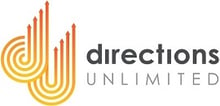
Read this before adding any new employees to your team in 2020!
I have never met anyone who deliberately set out to hire the wrong person for the job. In fact, everyone wants to have the best people in the right positions.
Statistics tell us we get it “right” (a top performer, not just an average performer) only 25% of the time. So, why do we get it right in only 1 in 4 hires?
The reason is that we just don’t have enough objective data available to us when we make our people decisions. We rely on resumes, reference checks and human instinct. As a result, we tend to hire people we like. Not a very scientific approach. I am confident if you reflect on the last significant spend you made you likely obtained some independent objective scientific data to assist your decision-making process.
I am also sure that if there was any other process in your practice that delivered the right outcome with such poor regularity, you would stop following that process immediately and look to develop a new approach.
Watson Wyatt surveyed 405 public companies of all types, posing 72 wide-ranging questions on everything from training to workplace culture to communications. In order to come up with a so-called Human Capital Index (HCI) score for each company, a statistical formula was applied (HCI measures how well an organisation makes use of the ability of an individual to perform. A higher human capital index indicates better management of human resources by the organisation. It is measured on a scale of 100). Then the subject companies were sorted into three HCI-rating categories: low, medium, and high. The companies in the high-HCI group delivered a 103 percent total return to shareholders over a five-year period, compared to 53 percent for low-HCI and 88% for medium-HCI companies. I am wondering where might your practice be on this HCI rating?
While psychometric testing and performance prediction have evolved considerably over the past 100 years, their value is often under appreciated. In this article from thepsychologist.bps.org.uk, two critical lessons from this broad field of research are highlighted. Namely, research on performance prediction has taught us the importance of choosing the right people and using the right tools to do so.
As it is mentioned in the article, selecting the right candidates is an important goal, but we must not forget about the one with equal importance – screening out undesirable candidates. The consequences of choosing the wrong people can be extremely detrimental for the company, as they lead to increased turnover rates, higher recruitment costs, and training expenses, along with lost productivity and decreases in morale among all employees. The high costs associated with replacing poorly performing individuals make it even more important to identify and select the best performers in the first place.
This is where you must ask yourself: on what should I base my decision when selecting a new candidate? Human instinct or a pre-employment assessment system? The thing is – people are very good at identifying what exactly it’s needed for a certain position in their company and at extracting information from the candidates, but they are doing poor at interpreting the results. The analysis made by Harvard Business Review (HBR) on 17 studies of applicant evaluations shows that a simple equation outperforms human decisions by at least 25%. This is valid for any situation with many candidates – no matter if the job is on the front line, middle management, or in the C-suite.
There are also several other benefits to a practice that an employment evaluation system can bring. It provides practice owners and managers with valuable information not only about their candidates, but also about their existing employees. This helps you identify their development needs and their strongest abilities, which you can improve, based on the given feedback.
Naturally, this doesn’t mean that you should completely remove the human judgment from the equation. A great way to make the best decisions would be to use the assessment systems exclusively in order to narrow down the number of possible candidates to only a few before you involve any human judgment. Afterwards, you can make the final decision by consulting with the managers/key staff that you trust the most. The next generation Great People Inside assessments we offer provide a customisable 21st century solution for a 21st century challenge. Our validated scientific tools enable you to measure precisely what’s important to your dental practice, from values to reasoning, and everything in between. In fact, we offer over 100 customisable dimensions!

Clients we work with enjoy a 300% increase in their success rate of identifying top performers.
Why not make a new year resolution and add some science to your selection process? To request a free demonstration please contact us.
|
About Directions Unlimited: We are a specialist provider of customised people solutions and services to local and international clients. We provide state of the art assessment and development solutions to help you select, match, on-board, David Leahy Director Directions Unlimited M: 0405-691-845 manage, develop, engage and retain top talent. |
David Leahy Director M: 0405-691-845  |
.png)